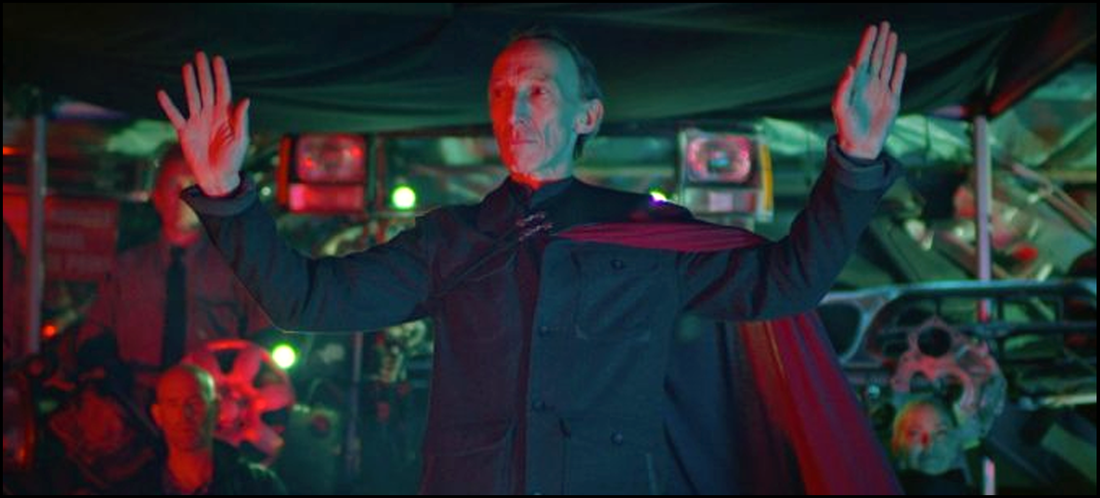Most folks – to varying degrees – hate growing old. While I’m certainly no fan of the associated health issues and watching society’s continual decline, I still had the good fortune of growing up during the entertainment boom of the late 1970’s and early 1980’s. For those caught unawares, home video was exploding as the single greatest avenue for middle class America. Video stores dotted the countryside like weeds. Before you could say “boo” every mom & pop grocery store or corner convenience mart was in the rental business. For a buck, you could take home a little something-something on video that never played on your local silver screen, if your town was lucky to have one.
Why didn’t it?
Well, most likely no studio would’ve ever put their name on it.
Looking back, it’s easy to admit that, yes, many of these “films” (I thought twice about calling them that) really were just a few evolutionary steps above garbage; but they still managed somehow to maintain some modest, inescapable charm. Clearly, they were conceived and made by folks who had something to say, even if that something was how the human face would look as it was being sawed off with a can opener. While history books were replete with crazies who murdered others with something as everyday conventional as an axe, these films hosted villains whose preferred method of assault involved drills, bugs, sawed-off shotguns, chainsaws, bicycle chains, garden tools, engine blocks, or that good old-fashioned chest-ripping karate chop. And there was blood. Oh, there was lots of blood. Not so much buckets and buckets as there were vats and vats of it.
Academics have written that just as home video spawned the revolution into such exploitation fare it also served as its death knell. Personally, I think that’s a lot of bunk because the popularity surrounding these cult films didn’t die off; rather, I think that their makers got absorbed by the same studio system they were at one time made outside of. These executives saw the profit potential in grindhouse style; and, thus, they created countless variations on a theme, spawning imitation across every possible genre. Westerns got into the act, and Science Fiction got into the business. Before you knew it, every studio was in the B-Movie market, leaving the little guys with nowhere to peddle his wares. Consequently, they moved to greener pastures, and we are where we are.
But indie efforts have rediscovered gore, and Spare Parts is just the latest (but perhaps not greatest) attempt to recast exploitation in a mold today’s audiences might find acceptable.
How does its body count measure up?
From the product packaging:
“In a godforsaken bar in the middle of nowhere, an all-girl band – Ms. 45 – rips the stage apart with their punk spirit. But their performance impresses an enthusiastic fan who lures the girls into a trap, sedates them, and starts … customizing them. Slowly, they begin to gain consciousness and, in total shock, realize their arms have all been replaced with axes and chainsaws to fight gladiator-style in a junkyard arena owned by a sadistic ‘emperor,’ forcing them into the battle of their lives with one prize in mind – their freedom.”
When the gorgeous Christina Lindberg stepped onto the silver screen in 1973’s Thriller – A Cruel Picture – one of the more memorable exploitation flicks of the early 1970’s – all her character Madeleine had to lose was an eye before being set out on her quest for revenge against her pimp and the men who sexually abused her. Director Andrew Thomas Hunt ups the ante considerably in Spare Parts by casting not one but four beautiful ladies, hacks off a limb apiece, sends them into the arena, and makes them fight as much for respectability as he does their lives in his gory, little picture. While his story (scripted by David Murdoch and Svet Rouskov) takes some time in setting up its particulars, Hunt and his gorgeous cast (Michelle Argyris, Emily Alatalo, Kiriana Stanton, and Chelsea Muirhead) dial it up to eleven (mostly) once they’re given the chance to prove they have the right stuff.
To his credit, Hunt’s exploitation has its limits: unlike Ms. Lindberg who rather famously showed all her goods and what she could do with them onscreen (in Thriller and beyond), these ladies stay covered up. (Egad!) There isn’t so much as a boob, a butt, or a side boob (that I recall) anywhere in sight. Granted, they’re all covered up in blood and leather, but they’re still covered up. Consider it the most tasteful form of gratuitous titillation possible.
No, the emphasis here is on the violence.
In that regard, Spare Parts makes the most of its moniker with the occasional disemboweling, skull crushing, and imaginative face removal. The script moves dutifully (if not too predictably or insanely) from capture to surgery to arena to training and back to the arena, to more training, and so forth at about the same pace of those exploitation films from my youth. If anything, the film’s biggest weakness is that there’s no real qualification of how much (or how little) time has passed: if you’re watching closely, you might even question how these lady warriors got so good so quickly … but it’s best not to think too deeply about, say, facts. Or science. Or reality. If you do, Spare Parts makes little sense.
At one time, there was an audience for this kind of stuff.
Australia’s Mad Max (1979) paved the way for Max Mad 2: The Road Warrior (1981), a vastly more commercially driven sequel than the original. What happened after that? Well, Hollywood got into the act, and Warner Bros. inevitably gave us Mad Max Beyond Thunderdome (1985), a boilerplate sequel that pretty much remade the second film but included a tribe of lost kids in order to make Max a bit more kid-friendly. What did we learn from this evolution? What I took from it was that the closer and closer exploitation got to the studio system the less and less interesting its characters became. By the time Tina Turner suited up as ‘Auntie Entity,’ the Tinseltown cartel sucked what made Max worth following on a road trip into oblivion.
So, yes, Spare Parts is a throwback to a time when films didn’t have to try so hard and were only interested in creating what spectacle they could with blood, guts, and maybe a bit of welcome feminine wiles. It’s violent. It’s dumb. It’s predictable. It’s derivative. It’s not gonna win any Academy Award or Golden Globe. It’s misogynistic and, somehow, equally empowering. I suspect its audience already knows that going in … but they’ll watch it anyway.
Just like I did when I was a kid.
Just like I do as an adult.
Still, I’m glad I grew up when I did.
(Mildly) Recommended. Hey, look … honestly, a title like Spare Parts (2020) is clearly about forty years past its prime, and I say this knowing that the very best of the very best B-Movies came out of the 1980’s. Its narrative? Its characters? Its love of blood and gore? Well, if there’s a timelessness to B-Movies, then even this might eventually find an audience. Stranger things have happened. There’s a fabulous scene in its set-up involving a wheelbarrow of severed limbs that’s damn genius, even. Its single greatest drawback? So far as I’m concerned, it really brought nothing new to the table … except, maybe, a few pretty faces. Here’s looking at you, ladies.
In the interests of fairness, I’m pleased to disclose that the fine folks at RLJE Films provided me with a complimentary DVD of Spare Parts by request for the expressed purposes of completing this review; and their contribution to me in no way, shape, or form influenced my opinion of it.
-- EZ





 RSS Feed
RSS Feed